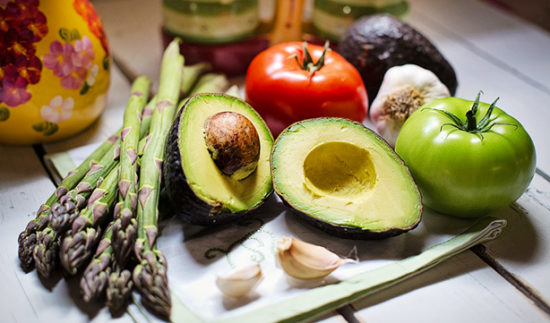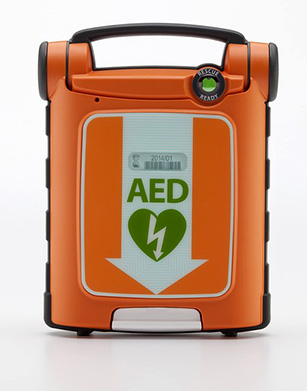Nutritional Value: A fork in the road
It’s 6 p.m. — do you know what’s for dinner tonight?
You’re not alone if you answer with the phone number of your favorite take-out eatery. As of 2014, The National Restaurant Association reports that adults, on average, eat out about five times a week. In fact, Americans now spend nearly half their food dollars eating away from home. While dining out was once considered a special occasion, restaurant meals are becoming the norm for how we eat today.
 Restaurant food, however, often serves up too many calories and too few nutrients when compared to homemade versions. The U.S. Department of Agriculture estimates that every meal eaten away from home increases an adult’s average daily calorie count by 135. On its own, not so bad. Multiplied by five times a week, however, and you stand to gain up to 10 pounds each year.
Restaurant food, however, often serves up too many calories and too few nutrients when compared to homemade versions. The U.S. Department of Agriculture estimates that every meal eaten away from home increases an adult’s average daily calorie count by 135. On its own, not so bad. Multiplied by five times a week, however, and you stand to gain up to 10 pounds each year.
Teens consume more calories, fat and saturated fat when they eat meals prepared away from home. They also eat fewer servings of fruit, vegetables and milk. What’s not surprising is their go-to choices include cheap fast-food chains, pizza joints and sandwich shops.
So how can you, and the athletes you influence, eat restaurant food more healthfully? The following skills and strategies will satisfy taste buds and help you meet daily nutritional needs.
Plan ahead
Just as daily workouts and practice sessions are planned ahead of time, the same should go for meals. Dining on fast food is convenient because it’s so predictable. But some initial research is necessary to find establishments that serve healthier options.
Remember, since we eat away from home so frequently, dining out is no longer an automatic occasion to indulge. If the only green things at your regular hangout are a few pieces of iceberg lettuce and the money you use to pay the bill, it’s time to find a new favorite restaurant.
Use Choose MyPlate as a guide just as you would at home. Eat at places that feature low-fat, wholesome complex carbs, such as whole wheat bread, tortillas and pasta, brown rice, and whole grains like quinoa and pearl barley. Ethnic cuisines and restaurants offering vegetarian selections make good choices.
Next, look for fresh fruits and vegetables. Do sandwiches come loaded with dark green lettuce, tomatoes and green peppers, and do pasta toppings include steamed or grilled vegetables? Can you build a salad that includes every color in the rainbow — red peppers, carrots, corn, broccoli, and purple cabbage? Or do mayonnaise-laden salads, croutons and bacon bits take center stage?
Other healthy strategies include ditching the pale green side salad and instead starting the meal with tomato juice or vegetable soup and swap sides of chips or fries for a fruit salad a few times each week.
 In terms of lean protein options, can you get a hearty bean soup or add chicken, lean red meat, fresh fish or tofu to salads, wraps, burritos and pasta? What calcium-rich options exist — low-fat milk and yogurt, or items that include a modest amount of cheese?
In terms of lean protein options, can you get a hearty bean soup or add chicken, lean red meat, fresh fish or tofu to salads, wraps, burritos and pasta? What calcium-rich options exist — low-fat milk and yogurt, or items that include a modest amount of cheese?
Once you’ve done your homework and found an eatery with healthy options, take advantage of being a regular diner. You won’t waste time and mental energy deciding where to go, you’ll enjoy quicker service and making reasonable special requests won’t be a problem.
Speak up
Competition is fierce among restaurants to find and retain loyal customers, so don’t be afraid to ask for what you want. Model how to respectfully inquire how foods are prepared and about the ingredients they contain before ordering. Request extra vegetables or ask that high-fat condiments like salad dressing and sour cream be left off or served on the side so you can control the amount used.
Once you’re familiar with the options offered, save time by ordering meals in advance by phone or online for take-out or delivery. You’re also more likely to opt for healthier fare if you aren’t standing in line ravenous and drooling over the day’s fat-laden special.
Portion distortion
Despite our good intentions, it’s a simple fact that we eat more food when more food is placed in front of us. More calories, unfortunately, doesn’t translate into more of the key nutrients we need, like vitamins A and C, iron, calcium and fiber. Portion sizes have ballooned so dramatically that even a health-conscious person can put on unwanted pounds if they routinely clean their plate.
Over the past 40 years, the “average” bagel has grown 350 percent, meaning that the average deli-style bagel is now equivalent to eating five to seven pieces of bread. Softball sized muffins, buckets of popcorn (as much as 20 cups, totaling more than 1,600 calories with the butter topping) and 32-ounce Big Gulps (400 calories and the equivalent of 25 teaspoons of sugar) are nutritional bargains only if you value quantity over quality.
Just as you wouldn’t let a stranger call the plays during a game, don’t let the restaurant’s staff decide the appropriate amounts to eat. Learn to estimate healthful food portions. Three ounces of cooked meat, poultry or fish, for example, resembles a deck of playing cards. An ounce of cheese is the size of four stacked dice, a half cup of mashed potatoes or vegetables about the size of an average woman’s fist, and a half cup of ice cream looks like a tennis ball. Watch out for foods you especially enjoy, as acceptable-size portions tend to “grow” over time.
Ask for a take-home container and fill it before you start eating. Split today’s enormous entrees in half, as well as the gargantuan portions contained in take-out cartons. Save it for lunch the following day.
Slow down
Since it takes approximately 20 minutes for our brains to register that we’re full, slow down and savor your choices, especially when dining out. Remind yourself that you’re saving time already by not having to cook or clean up. When indulging in a favorite, really taste and savor every bite. Enjoying food makes for a guilt-free, pleasurable dining experience and that helps to reduce the desire to over-indulge.
Keep in mind that just because we can now purchase food virtually anywhere and at any time, it doesn’t mean these dining ventures are fulfilling. Doing a lot of things at once may make us feel more efficient even if we’re not doing a very good job at any of them. In the long run, your health and ability to perform benefits more from taking a few uninterrupted minutes to sit down and eat than knowing it’s possible to wolf down a burrito without spilling a drop while speeding across town.
Having trouble slowing down when you eat? Challenge yourself to put down your fork or spoon between bites. You’ll notice a significant difference.
Suzanne Girard Eberle is a board-certified sports dietitian and the author of Endurance Sports Nutrition (third edition, 2014). Nutritional Value, a column that focuses on athlete health and wellness, appears regularly in Coach & Athletic Director magazine.





